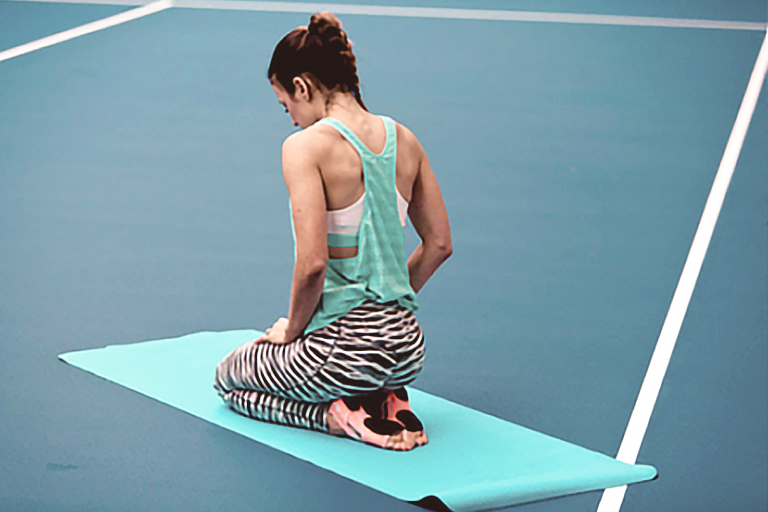
Sportswomen, competitors who want too much… Female athlete triad
Eating disorders, too low percentage of body fat, intense physical activity, lack of menstruation … This is a problem that sportswomen, female athletes of various sports are increasingly struggling with. Sometimes (and even very often) this problem also applies to people with increased physical activity or amateur athletes.
Ambitious, fit, achieving the goals she sets for herself, living under pressure from the surrounding people, not getting enough rest… Female athlete triad – it’s a serious problem nowadays. Since I’m an athlete myself, it’s a really interesting and significant topic for me as well. I decided to write this post as a kind of warning for other ambitious and tenacious fighters. I hope you learn a lesson from it…
Why is this topic so important to me?
Because I had this problem, too… It happened when I was a Polish representative in karate and I competed in international arenas. Luckily, it didn’t last too long. But since that time I have always tried to talk about it openly… Remember: don’t try to win at any cost!
Why does it happen?
Female athletes who train for many years very intensively in disciplines where a slim body is necessary, such as eg gymnastics, aerobics, ballet, skating, or in very high-intensity disciplines, such as athletics, running, jumping, team games, often struggle with menstrual or eating disorders.
However, not all athletes have this problem. It all depends on the genetic predisposition, age, body composition, training load as well as sport discipline practised and mental attitude. I remember when I was in my best shape, I was very strict with my diet, I had low body fat content and I trained several times a week … The pressure from myself and from the people around me along with the desire to be better and just to achieve my sport goal didn’t lead me to good results…
What is female athlete triad?
In 2007, after a series of meetings, ACSM (American College of Sports Medicine) came up with a new definition of the triad. According to the recent definition, female athlete triad is a “clinical unit which refers to interrelationships among three components: energy availability, menstrual function and bone tissue health.”
Therefore, female athlete triad is a set of symptoms and pathological conditions including:
- Energy deficiency connected with nutritional problems.
- Menstrual disorder or amenorrhea.
- Loss of bone mass or osteoporosis.
Below you will find a brief description of all three aspects of this disorder
-
Energy deficiency connected with nutritional problems.
Energy deficiency is the main cause of the Triad. It is most often caused by imbalance between the amount of energy delivered to the body along with food and the amount of energy consumed during exercise. In some cases, sportswomen consciously limit the amount of food intake, which results from dissatisfaction with their appearance, or from social pressure. Research shows that athletes who are required to have an ideal figure, most often have a distorted image of their body and are more often dissatisfied with their build.
Sometimes the consequence of this process is the development of anorexia or bulimia. The cause of insufficient energy intake is also an eating disorder. Some athletes, however, may not be aware that the amount of energy consumed is too low in relation to the amount of energy expended. As a result, they develop a secondary lack of menstruation. In addition, they also get chronic fatigue, anemia, electrolyte disturbances, and depression. What’s more, sports performance deteriorates.
-
Menstrual disorders and amenorrhea
Another problem associated with the triad are menstrual disorders manifested by irregular menstrual cycles, staining, anovulatory cycles or dysmenorrhea. Unfortunately, menstrual disorders in women practicing competitive sports are often passed over in silence. However, research shows that this problem may affect up to 27% of female athletes with slim and 17% female athletes with massive build. Still, the most serious problem associated with the triad is the lack of menstruation. Proper menstruation means regular menstrual cycles, occurring every 21-35 days. However, lack of three consecutive cycles is defined as a secondary absence of menstruation.
Menstrual disorders can lead to serious health problems. In the case of disorders of menstrual cycle, the level of estrogen is reduced. Estrogen deficiency may result in loss of bone density and lead to premature osteoporosis. Low level of estrogen is also an important risk factor for cardiovascular diseases. Women with hypoestrogenism also have an increase in total cholesterol and elevated levels of low density lipoproteins (LDL cholesterol).
Menstrual disorders can also lead to problems with pregnancy or even infertility. Women with menstrual disorders also have immunity disorders as well as impaired oxidative metabolism of skeletal muscles. Irregular menstrual periods or irregular cycles may lead to emotional disturbances. As you can see, the consequences of the triad can affect many systems.
-
Loss of bone density and osteoporosis
Malnutrition, lack of appetite, a diet low in calcium and other minerals and vitamins, can eventually lead to a reduction in bone density, which in turn increases the risk of injury and the development of osteoporosis. Low bone density occurs in 22-50% of elite female athletes compared to 12% of the general population. Low levels of estrogen due to low energy availability also impair the rate of building bone tissue.
This hormone plays an important role in the activity of osteoclasts and osteoblasts and in maintaining the balance between bone formation and resorption as well as inhibition of bone turnover. Estrogen deficiency increases the risk of osteopenia, which causes weakness of bone strength and growth, which is often the cause of fractures. This is particularly dangerous because the disease develops slowly, without characteristic symptoms, until a fracture takes place.
Education of trainers, female athletes and their families about the triad of female athelets seems necessary. Insufficient amount of calories consumed in relation to the amount spent can have a negative impact on sports results. Low energy availability leads to an increased incidence of infections, injuries, poor coordination, decreased muscular strength and reduced physical capacity. All this can drastically affect further results and the development of a sports career.

References:
1: Nose-Ogura S, Harada M, Hiraike O, Osuga Y, Fujii T. Management of the female athlete triad. J Obstet Gynaecol Res. 2018 Jun;44(6):1007-1014.
2: Raj MA, Rogol AD. Female Athlete Triad. 2018 Apr 26. StatPearls [Internet]. Treasure Island (FL): StatPearls Publishing; 2018.
3: Chamberlain R. The Female Athlete Triad: Recommendations for Management. Am Fam Physician. 2018 Apr 15;97(8):499-502.
4: Mehta J, Thompson B, Kling JM. The female athlete triad: It takes a team. Cleve Clin J Med. 2018 Apr;85(4):313-320.
5: Kroshus E, DeFreese JD, Kerr ZY. Collegiate Athletic Trainers’ Knowledge of the Female Athlete Triad and Relative Energy Deficiency in Sport. J Athl Train. 2018 Jan;53(1):51-59.
6: De Souza MJ, Koltun KJ, Etter CV, Southmayd EA. Current Status of the Female Athlete Triad: Update and Future Directions. Curr Osteoporos Rep. 2017 Dec;15(6):577-587.
7: Joy EA, Nattiv A. Clearance and Return to Play for the Female Athlete Triad: Clinical Guidelines, Clinical Judgment, and Evolving Evidence. Curr Sports Med. Rep. 2017 Nov/Dec;16(6):382-385.
8: Williams NI, Statuta SM, Austin A. Female Athlete Triad: Future Directions for Energy Availability and Eating Disorder Research and Practice. Clin Sports Med. 2017 Oct;36(4):671-686.
9: Loveless MB. Female athlete triad. Curr Opin Obstet Gynecol. 2017 Oct;29(5):301-305
10: Duignan M, O’Connor N. Female athlete triad: At breaking point. Int Emerg Nurs. 2017 Sep;34:51-54.










Comments No Comments
Join the discussion…